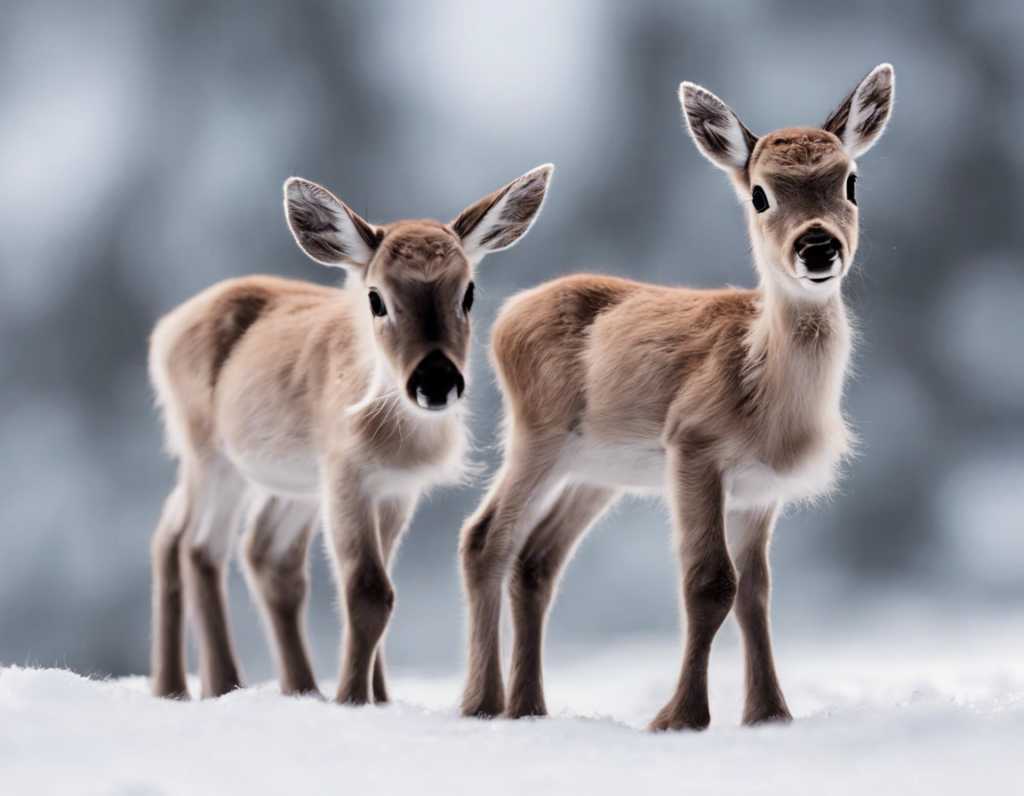Rudolph the Red-Nosed Reindeer may be the most famous of his kind, but baby reindeer are just as captivating and endearing. These gentle creatures, also known as calves, are born in the Arctic regions of North America, Europe, and Asia and are a delight to behold. In this article, let’s delve into the fascinating world of baby reindeer, exploring their growth, habits, and importance in their ecosystems.
The Birth of Baby Reindeer
Baby reindeer are typically born in late spring, ensuring they have sufficient time to grow and develop before the harsh winter sets in. The mothers, known as does, give birth to a single calf after a gestation period of around 7-8 months. The newborn calf is precocial, meaning it is born relatively developed and can stand and walk within hours of birth. This is crucial for their survival in the arctic environment, where predators like wolves and bears pose a constant threat.
Development and Growth
After birth, the baby reindeer relies on its mother’s milk for nourishment, which is rich in fat and nutrients to help it grow quickly. Within a few days, the calf will start to nibble on grasses, lichens, and mosses, transitioning to a diet that is similar to that of adult reindeer. Over the next few months, it will gain weight rapidly, doubling or even tripling its birth weight by the time winter arrives.
Social Structure
Baby reindeer are not only dependent on their mothers for milk but also for protection and guidance. They stay close to their mothers and other members of the herd, learning essential survival skills such as where to find food and how to detect predators. As they grow older, the young calves may form close bonds with other juveniles in the herd, engaging in playful activities that help them develop coordination and strength.
Adaptations to Cold Environments
Baby reindeer are well-adapted to the extreme cold of the Arctic tundra. Their thick fur provides insulation against the freezing temperatures, while their hooves are specially adapted to help them dig through snow to uncover vegetation. Baby reindeer also have a specialized nasal structure that warms the cold air they breathe before it reaches their lungs, helping them conserve heat in the frigid environment.
Predators and Threats
Despite their adaptations and the protection offered by the herd, baby reindeer face numerous threats in the wild. Wolves, bears, and lynxes are all natural predators of reindeer calves, and they are constantly on the lookout for easy prey. Harsh weather conditions, food scarcity, and human activities such as hunting and habitat destruction also pose significant risks to their survival.
Conservation and Importance
Baby reindeer play a crucial role in the ecosystem of the Arctic regions where they live. They help maintain the balance of plant populations by grazing on vegetation, which in turn helps prevent overgrowth and promotes biodiversity. Additionally, they are an essential food source for predators, contributing to the overall health and stability of the ecosystem.
Frequently Asked Questions (FAQs)
1. How big are baby reindeer at birth?
Baby reindeer are typically around 8-10 pounds at birth, depending on the subspecies and the health of the mother.
2. How long do baby reindeer stay with their mothers?
Baby reindeer usually stay with their mothers for about 6-8 months, until they are weaned and able to fend for themselves.
3. Do baby reindeer have a different diet than adult reindeer?
While baby reindeer initially rely on their mother’s milk, they quickly transition to a diet that is similar to that of adult reindeer, consisting of grasses, lichens, and mosses.
4. Are baby reindeer endangered?
While some subspecies of reindeer are considered vulnerable or endangered due to habitat loss and climate change, others are more stable in population numbers.
5. How fast can baby reindeer run?
Baby reindeer are surprisingly agile and can run within hours of birth, reaching speeds of up to 50 miles per hour to evade predators.
In conclusion, baby reindeer are not just adorable creatures but also vital components of the Arctic ecosystem. Through their growth, development, and interactions with their environment, they contribute to the delicate balance of nature in some of the harshest environments on Earth. Observing these young calves as they take their first steps and explore the world around them is a privilege that reminds us of the beauty and resilience of nature.
